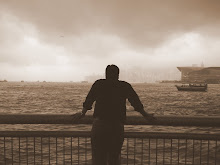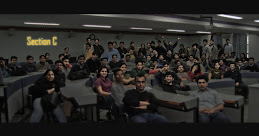
Straight from wiki and straight out of pleasure of the past night!!
Moët et Chandon (pronounced [moɛt‿e ʃɑ̃ˈdɔ̃]), or Moët, is a French winery and co-owner of the luxury goods company Moët-Hennessy • Louis Vuitton. Moët et Chandon is one of the world's largest champagne producers and a prominent champagne house. The company holds a Royal Warrant to supply champagne to Queen Elizabeth II. Moët et Chandon was established in 1743 by Claude Moët, and today owns more than 1,000 hectares (2,500 acres) of vineyards, and annually produces approximately 26,000,000 bottles of champagne.
History
Foundation
Moët et Chandon began as Moët et Cie (Moët & Co.), established by Épernay wine trader Claude Moët in 1743, and began shipping his wine from Champagne to Paris. The reign of King Louis XV coincided with increased demand for sparkling wine. Soon after its foundation, and after son Claude-Louis joined Moët et Cie, the winery's clientele included nobles and aristocrats.
Moët began business with Madame de Pompadour in 1750. She continually supplied the Royal Court at Compiègne with Moët's champagne. Also in 1750, Moët began establishing business in Germany, Spain, Eastern Europe, and colonial British America. In 1792, on Claude Moët's death, grandson Jean-Rémy Moët assumed control of Moët et Cie, and expanded the business buying the vineyards of the Abbey of Hautvillers, where Benedictine monk Dom Perignon perfected double-fermentation for creating champagne.
Moreover, the Moët surname was prestigious before the winery's establishment; King Charles VII ennobled brothers Jean and Nicolas Moët (Claude's ancestors) in 1446.
Into the 19th century
The company truly attracted a loyal international following after it initiated an account with Napoleon. Jean-Rémy, who had become mayor of Epernay in 1802, met Napoleon in 1804. Within the new guest houses at Moët's headquarters on 20 rue de Champagne, Napoleon I and his entourage were lavishly dined and wined. Historian of champagne Patrick Forbes wrote: "everybody who was anybody in Europe was passing through the Champagne district en route from Paris to the Congress of Vienna and they all wanted to visit the celebrated champagne maker. ... His 10 years in the Napoleonic limelight had made him the most famous wine-maker in the world and orders for his champagne began pouring in with such profusion that he hardly knew how to fill them." In appreciation for Jean-Rémy's generosity, the Emperor of the French gave Jean-Rémy his, Napoleon's, Officer's cross of the Legion of Honor. In honor of Napoleon, Moët later in its history dedicated its Brut Imperial to him.
After his connections with Napoleon, the company of Moët contained a portfolio of prominent figures which encompassed Tsar Alexander II of Russia, Emperor Francis II of Austria (Napoleon's father-in-law), the Duke of Wellington, Madame de Staël, Queen Victoria, and the Prince Royal of Russia (later to become emperor of Germany) among many more. Sales durign the 1820s are believed to have been on average 20,000 bottle annually. Leadership of the company changed in 1832 when Jean-Rémy retired and left the company in the hands of his son Victor Moët and son-in-law Pierre-Gabriel Chandon de Briailles. As M.Chandon became incorporated into the company as co-owner, the name was officially changed that same year to "Moët et Chandon." Following the introduction of the concept of a vintage champagne in 1840, Moët marketed its first vintage in 1842. Their best-selling brand, Brut Imperial was introduced in the 1860s.
The Marne Valley fell under the ownership of Moët et Chandon in 1879, expanding the company's operations. The introduction of more flavorsome grapes from Cramant, Le Mesnil, Bouzy, Ay, and Verzenay also followed. As expansion grew, so did the employee count. At the time, about 2,000 people were under the employment of Moët et Chandon and a type of "social security" was formed which gave free medical attention, housing assistance, pensions, maternity benefits, sick pay, and free legal aid. Job holders included cellarmen, cork cutters, clerks, vineyard farmers, tinsmiths, needlewomen, basketmakers, firemen, packers, wheelwrights, and stableboys. Sales in 1872 are reported to have been at 2,000,000 bottles and at 2.5 million by 1880, while consumers continued to consist of the upper social hierarchy.
Milestones in the 20th century
During World War I, France suffered much destruction. Moët et Chandon lost the offices and guest houses, where Napoleon I had stayed, to bombing raids. After the war, the company re-established its position in the market by introducing the Dom Pérignon brand of vintage champagne in the late 1920s. The introduction of the Dom Pérignon label set a trend in which many other champagne houses came to introduce their own premium label of champagne intended to surpass their regular vintage champagne. Nevertheless, it was Dom Pérignon which came out to be the most successful brand. Dom Pérignon was recognized by connoisseurs as the most perfect champagne available, and was also the most expensive on the market. During World War II in which France fell under occupation of Nazi Germany, business was negatively affected. However, due to the modernization of operations within the firm, it managed to recover well. The goals of fairness and efficiency were emphasized in all aspects of production, from the installation of new wine presses to a comprehensive system of work incentives.
Headquarters in Épernay.
Count Robert-Jean de Vogüé, a prominent figure in wine purchasing, became the leader of Moët et Chandon in the 1950s. Transformed from a family-owned business into a Société Anonyme (or corporation), Moët et Chandon under de Vogüé gained great success and an expansion rate never before experienced. In 1962 it became the first champagne house to be listed on the French stock market. That same year, the company acquired full rights to France's oldest wine maison and main competitor of Moët et Chandon, Ruinart Père et Fils. Another rival wine house, Mercier, was taken over by 1970. Soon afterwards Moët et Chandon purchased an interest in Parfums Christian Dior, the first out-of-winery investment by the company, which was soon taken over by Moët. The company took a milestone step in 1971 when it merged with the cognac producer Jas Hennessy & Co. to create Moët-Hennessy. The decision was made as a result of a 1927 statute which limited the champagne growing region to 34,000 hectares. De Vogüé believed that the supply of land under cultivation (less than 25,000 hectares) would be exhausted by the demand for champagne by 2000. Thus it seemed logical to merge with Hennessy who could supply diversification and a stable future for Moët. Together, both houses grew greatly financially and were able to, as a group, "stimulate the growth of their interests abroad."
In 1973, the company launched Domaine Chandon, a winery subsidiary in California. The company undertook its final merger; with Louis Vuitton, a prominent luxury goods purveyor whose goods remain renown as status symbols. This final merger gave birth to the largest luxury group in the world, Moët-Hennessy • Louis Vuitton (LVMH), netting over 16 billion euros in fiscal 2004. In 2006, Moët et Chandon Brut Impérial issued an extremely limited bottling of its champagne named "Be Fabulous", a special release of its original bottle with decorative Swarovski crystals, marking the elegance of Moët et Chandon. Also in 2006, Moët et Chandon illuminated the Statue of Liberty on its 120th anniversary.
In 2007, the company opened its Grand Vintage 2000 European Launch at the Musée de l'homme in Paris
In 1973, the then Moët-Hennessy company founded Domaine Chandon, an outpost winery in the Napa Valley. It was the first French-owned sparkling wine venture in the United States. The fine dining restaurant etoile is situated at the winery.
Domaine Chandon in Australia was established in 1986 at Green Point, Victoria.
Pronunciation
Moët is frequently mispronounced. Common mispronunciations include "mow-ee" and "mo-way". The correct pronunciation is "mo-wett".





No comments:
Post a Comment